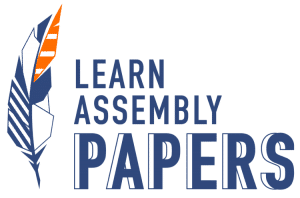
6
Individualized learning
Personalizing learning enables you to improve the effectiveness of your learning programs and boost the performance of your employees. By providing them with all the resources and instructional resources they need to develop their skills, individualized learning takes account of each person's prior learning, objectives and pace. Learn Assembly Papers examines the various aspects of individualized learning programs. The aim of this issue is to help you build a strategy, an ecosystem and learning programs adapted to the needs of each of your learners.

EDITORIAL
Antoine Amiel
CEO of Learn Assembly
Adaptive learning, self-positioning, mentoring, tutoring, cold assessment, AFEST... All these practices have one and the same objective: to personalize learning. This means adapting learning content to the right time, the right format, the right person and the right channel, thanks to in-depth knowledge of the learner and his or her needs.
Indeed, adapting your learning programs to the needs of each individual multiplies your chances of ensuring the effectiveness of your courses, as well as the motivation and commitment of your learners.
But that's easier said than done. The first essential step before designing a learning program is to identify your target group and its real needs. This is what the self-positioning test does, by measuring an employee's level of maturity on a given subject. Offered upstream of a learning program, it enables the learner to situate his or her knowledge in relation to the level expected at the end of the course.
There are many other ways of individualizing learning. In this issue, you will find articles on the following subjects:
- White paper: Develop your self-positioning skills with Learning Boost by Learn Assembly
- Mentoring: a new profession?
- Motivate your employees to learn: Learn Assembly's advice
- Cold appraisal: what if we took action?
- Open Badges to fight the recognition monopoly?
- Guide to learning methods in the digital age
- Learn Assembly helps Nexity train its employees in learning agility
Enjoy your reading!
In this issue...


